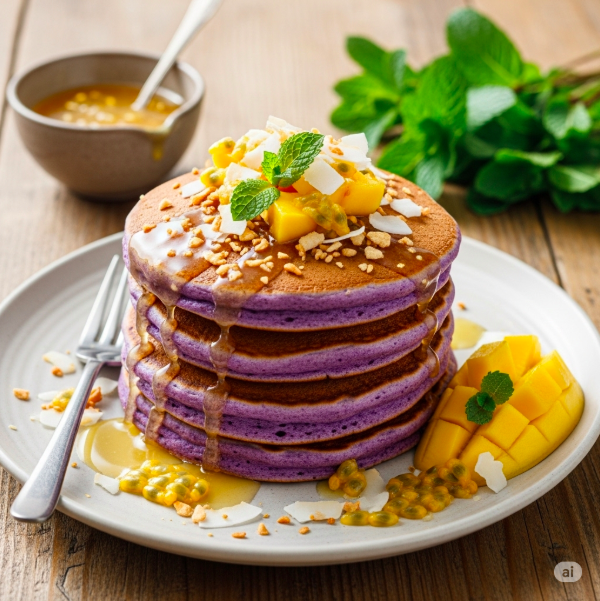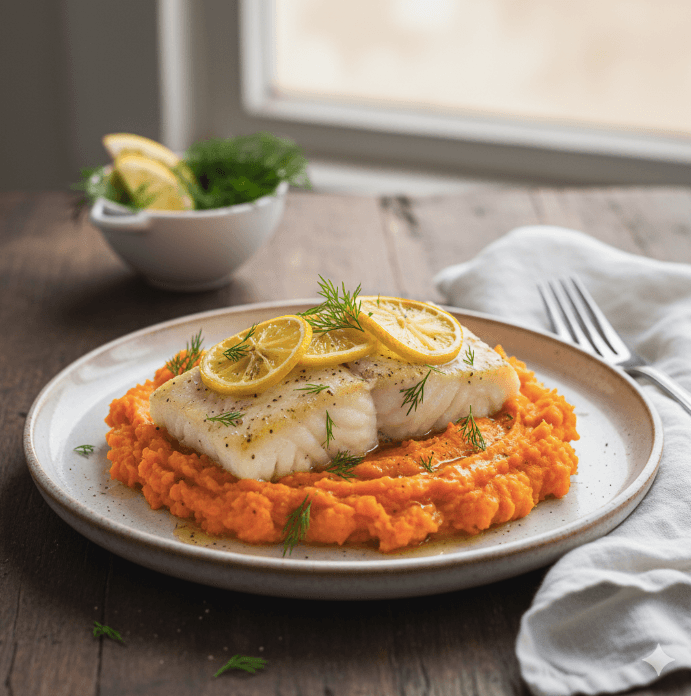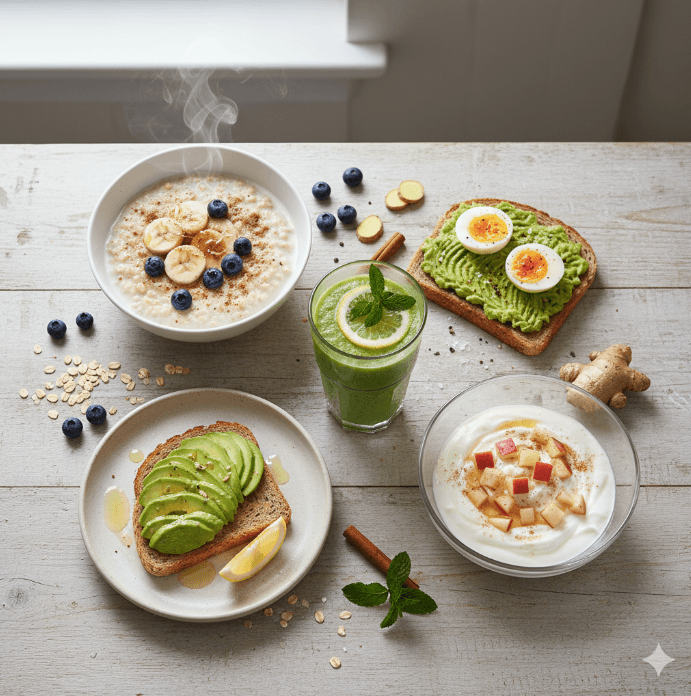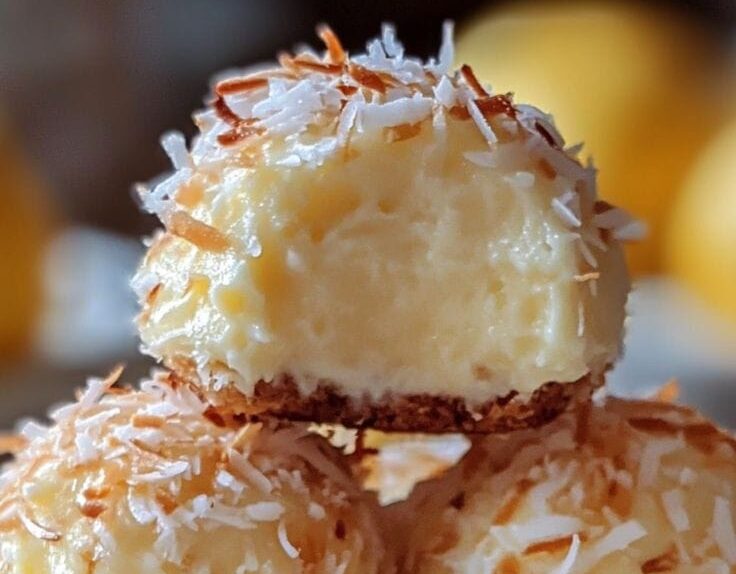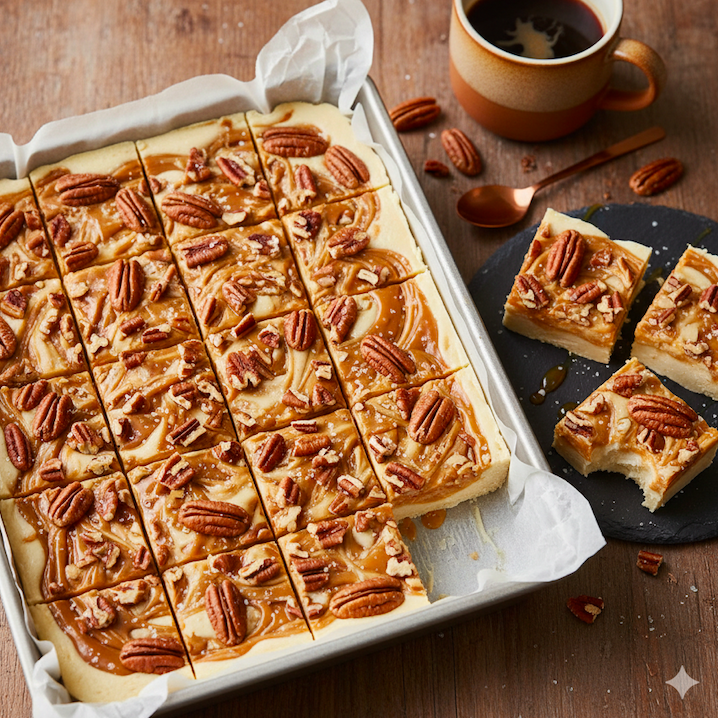The Ultimate Guide to Fluffy Ube Mochi Pancakes: A Purple Paradise on Your Plate
Picture this: you’re scrolling through social media on a lazy Sunday morning when suddenly, a stack of vibrant purple pancakes stops you mid-scroll. Those mesmerizing violet hues aren’t just food coloring magic—they’re ube mochi pancakes, and they’re about to become your new breakfast obsession. If you’ve been curious about this Filipino-Japanese fusion that’s taking brunch menus by storm, you’re in for a treat that combines the earthy sweetness of purple yam with the delightfully chewy texture of mochi.
Table of Contents
What Makes Ube Mochi Pancakes So Special?
Ube mochi pancakes represent a beautiful marriage between Filipino and Japanese culinary traditions. Ube, pronounced “OO-beh,” is a purple yam native to the Philippines that offers a subtle, nutty-vanilla flavor with natural sweetness. When combined with mochiko (sweet rice flour), these pancakes develop an incredibly unique texture that’s simultaneously fluffy and pleasantly chewy.
Unlike regular pancakes that can become dense or rubbery, ube mochi pancakes maintain their bounce while staying tender. The natural purple color creates an Instagram-worthy presentation that’s completely authentic—no artificial coloring needed. This combination has made them a favorite among food enthusiasts seeking both visual appeal and exceptional taste.
Essential Ingredients for Perfect Ube Mochi Pancakes
Success starts with quality ingredients. Here’s everything you’ll need to create these purple gems:
| Ingredient | Amount | Purpose | Substitution Options |
|---|---|---|---|
| Mochiko (sweet rice flour) | 1 cup | Creates chewy texture | Glutinous rice flour |
| All-purpose flour | ½ cup | Structure and fluffiness | Gluten-free flour blend |
| Ube powder/extract | 2-3 tbsp powder or 1 tsp extract | Flavor and color | Fresh ube (steamed and mashed) |
| Sugar | ¼ cup | Sweetness | Coconut sugar, maple syrup |
| Baking powder | 2 tsp | Lift and fluffiness | Cannot substitute |
| Salt | ½ tsp | Flavor enhancement | Sea salt |
| Milk | 1 cup | Moisture | Coconut milk, almond milk |
| Eggs | 2 large | Binding and structure | Flax eggs for vegan option |
| Melted butter | 3 tbsp | Richness | Coconut oil |
| Vanilla extract | 1 tsp | Flavor depth | Ube extract |
The key to authentic flavor lies in sourcing quality ube. Look for ube powder or extract at Asian grocery stores or online retailers. Fresh ube requires steaming and mashing but provides the most authentic taste.
Step-by-Step Ube Mochi Pancake Recipe
- Prepare your dry ingredients by whisking together mochiko, all-purpose flour, sugar, baking powder, salt, and ube powder in a large bowl until evenly combined.
- Create your wet mixture in a separate bowl by beating eggs, then adding milk, melted butter, and vanilla extract. If using ube extract instead of powder, add it here.
- Combine wet and dry ingredients gradually, stirring just until incorporated. The batter should be slightly thicker than regular pancake batter but still pourable. Let it rest for 5 minutes to allow the mochiko to hydrate.
- Heat your pan or griddle to medium-low heat (around 300°F). This lower temperature prevents burning while ensuring the mochi texture develops properly.
- Cook the pancakes using about ¼ cup of batter per pancake. Cook for 3-4 minutes until bubbles form on the surface and edges look set, then flip carefully and cook for another 2-3 minutes.
- Test for doneness by gently pressing the center—it should spring back slightly due to the mochi texture.
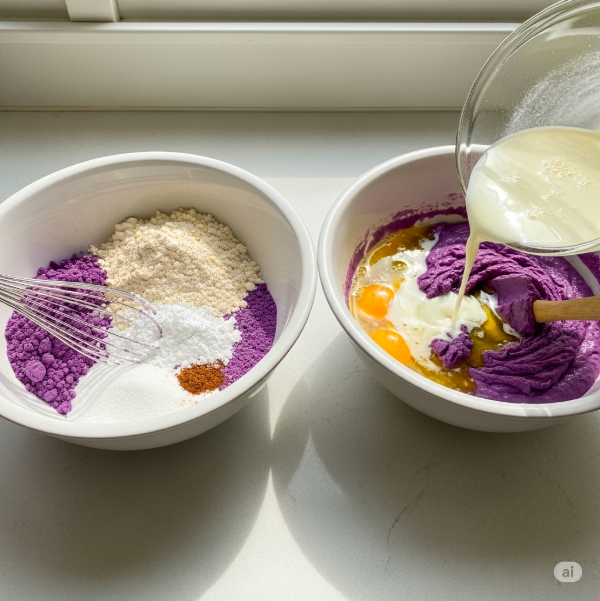

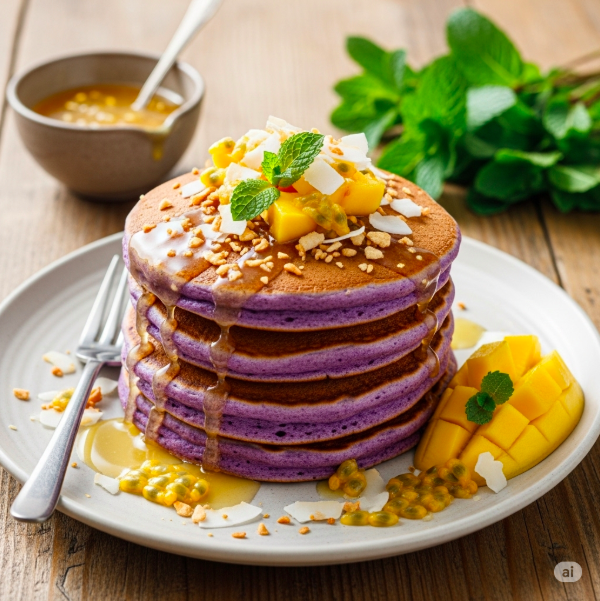
Pro Tips for Pancake Perfection
Your success depends on mastering a few crucial techniques. First, resist the urge to overmix your batter. The mochiko needs gentle handling to develop its characteristic chewiness without becoming tough. Second, temperature control is critical—too high heat will burn the outside while leaving the center undercooked.
Watch for visual cues during cooking. The surface should develop small bubbles, and the edges will appear slightly dry when ready to flip. Use a thin, flexible spatula for flipping, as these pancakes are more delicate than traditional ones due to their unique texture.
For storage, keep cooked pancakes warm in a 200°F oven if serving immediately, or cool completely before refrigerating for up to three days. Reheat gently in a toaster or low oven to maintain texture.
Creative Serving Suggestions and Toppings
Transform your ube mochi pancakes into a memorable meal with these topping combinations:
• Traditional Filipino style: Drizzle with coconut syrup and top with toasted coconut flakes • Modern fusion approach: Add matcha whipped cream and fresh berries for color contrast • Decadent weekend treat: Layer with ube ice cream and mochi balls • Health-conscious option: Fresh tropical fruits like mango and passion fruit with a honey drizzle • Comfort food classic: Maple syrup and crispy bacon for sweet-savory balance
The natural purple color pairs beautifully with white, green, and yellow accompaniments, creating visually stunning presentations perfect for special occasions or social media sharing.
FAQ
Can I make these gluten-free? Yes! Replace the all-purpose flour with a gluten-free flour blend. The mochiko is naturally gluten-free, so you’ll maintain the signature chewy texture.
How long do ube mochi pancakes last? Properly stored in the refrigerator, they’ll stay fresh for up to three days. For best texture, reheat gently in a toaster or low oven rather than the microwave.
What’s the best ube brand to use? Look for brands like McCormick, Good Shepherd, or Filipino specialty brands available at Asian markets. Powder typically provides more consistent results than extract.
Can I freeze the batter? It’s better to freeze cooked pancakes rather than batter. The mochiko can separate when frozen raw, affecting texture.
How do I make them more purple? Increase the ube powder gradually—start with an extra tablespoon. Remember that natural ube provides a more muted purple than artificial coloring.
Conclusion
Mastering ube mochi pancakes opens up a world of culinary creativity that bridges cultures and flavors. The combination of Filipino ube and Japanese mochi techniques creates something truly special—pancakes that are both familiar and exotic, comforting and exciting. Remember that achieving the perfect texture takes practice, so don’t get discouraged if your first batch isn’t Instagram-perfect.
Ready to create your own purple paradise? Gather your ingredients, embrace the process, and prepare to fall in love with these extraordinary pancakes. Share your creations with friends and family—or better yet, tag us in your photos to inspire other home cooks on their ube journey!

